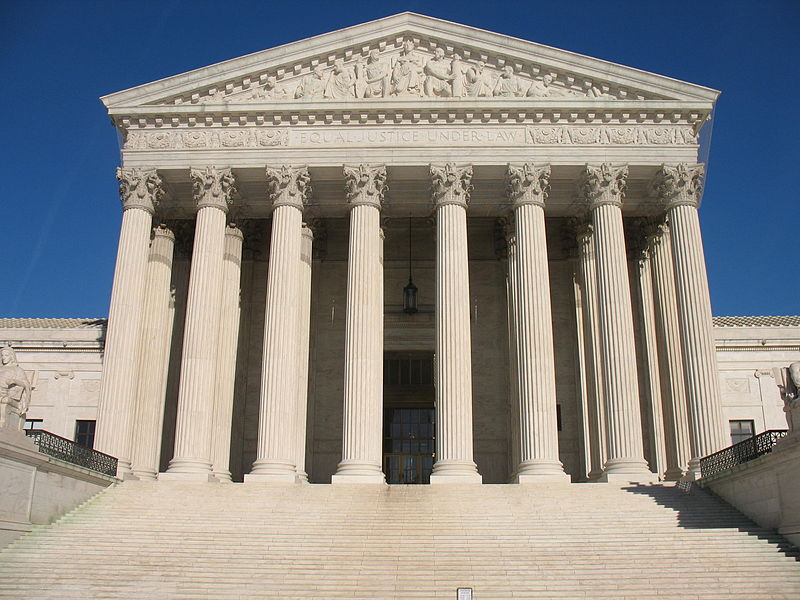As the highest court in the nation, the Supreme Court has quite a bit of responsibility. They determine the constitutionality of laws that affect the entirety of the nation, such as laws involving religious practices and their effect on corporate requirements and marriage and adoption laws. These laws and decisions have a heavy impact on the public. It is their right to know not only the ultimate decision on the law, but the reasoning behind it. It matters to them. The thing with the Supreme Court, however, is that they choose which cases to hear. In that, the public has no say.
1,900 cases. That’s how many cases were submitted to the Supreme Court this year. 11. That’s how many the Supreme court decided to hear and rule on.
Chief Justice John Roberts was quoted by USA Today stating, “We [the Supreme Court] are the most transparent branch of government. Everything we do that has an impact is done in public…our decisions are out there.” When he made that statement back in 2011, that statement was quite true. But has it remained true?
One of the biggest cases ruled on by the Court this year was the case of Burwell v. Hobby Lobby case, in which is was decided that requiring for-profit companies to provide compensation for contraceptive costs is unconstitutional in the case of closely-held companies, as it interferes with religious practices. This was a landmark decision as it is the first time a court has a for-profit company’s claim of religious practices.
Not only was this decision huge for the Supreme Court; this has an extremely large impact on people in the workforce. People in the workforce no have to pay completely out of pocket for expensive birth control methods, such as pills for women. By not requiring companies to pay for it, or even contribute, the cost falls completely on the part of the couple, making it a bit more difficult for them to get access to it. Which makes me, and the rest of the general public, wonder what the reasoning for this decision was.
I won’t lie, I’m honestly surprised by this ruling. I cannot tell if the Supreme Court is trying to be more respecting of religious beliefs or if they’re just siding with the interests of capitalism. I understand that religious beliefs often cause issues between employees and employers, but this seems a bit out there. In all honesty, I’m more surprised by the fact that the company didn’t want to provide partial compensation. Does it temporarily cut into profits for the company, yes. But in the long run it helps to prevent having to pay for maternity leave. By not providing contraceptive compensation in employee health benefits, you’re advocating for parenthood, however indirectly. Maybe that was in fact the goal of Hobby Lobby. The point is, we don’t know. The general public doesn’t know the reasoning behind the ruling or the reasoning behind the suit in the first place. This seems to be a trending theme with the Supreme Court as of late.
Another case in which the public is completely in the dark about the reasoning behind the decision is in the Supreme Court’s ruling to leave standing the rulings on cases of same-sex marriage made by courts in Utah and several other states. This means that same-sex marriage is now allowed in several states, setting forth a precedent for states to come. It seems to be only a matter of time before same-sex marriage is legalized nationally, if the Supreme Court has anything to say about it.
The Supreme Court has been quiet on the reasons as to why they have ruled the way they have. There were no oral arguments, merely decisions written by the majority and minority of the Supreme Court and then a vote was taken. This is odd behavior for the Supreme Court as “even lower courts seeking guidance for their own rulings have been left to guess why the justices issued certain rulings. All of this is harmful to democracy.” This was stated by Nan Aron, president of the liberal Alliance for Justice in an article published by USA Today. He goes on to say that reasoning for the rulings being made public is the least the Supreme Court can do for the people in exchange for their lifetime appointments, and frankly I agree with him.
Not knowing what the Supreme Court is thinking with these decisions does not instill faith in the system. It brings up more questions, changing people’s views of how the government is planning on going about things. We are left to speculate the reasonings behind these results, and that rarely ends well.
We as a general population voted them in there, however indirectly. The fact of the matter is, the Supreme Court owes us their reasoning. They owe us explanation.
The Supreme Court doesn’t seem to realize the exact effects it’s having on hundreds of thousands of voters; same-sex couples in many states, employees in many companies, and many others. And without their reasoning behind these decisions, voters are left completely in the dark. As Erwin Chemerinsky, founding dean of the University of California-Irvine School of Law pointed out, it seems to us as if these decisions were made without rhyme or reason.
This isn’t about disagreement with the decisions made by the Supreme Court. This isn’t political standpoints, or personal beliefs about these sensitive topics. This is about information. We as the population of the United States of America, as voters and citizens, have the right to explanation, to know the reasoning behind decisions that affect us. That’s really why the Supreme Court has been in the news lately. Not because of their actual decisions, but because they won’t explain. Because we need them to explain. Because information is being withheld from us. And that’s not okay.














